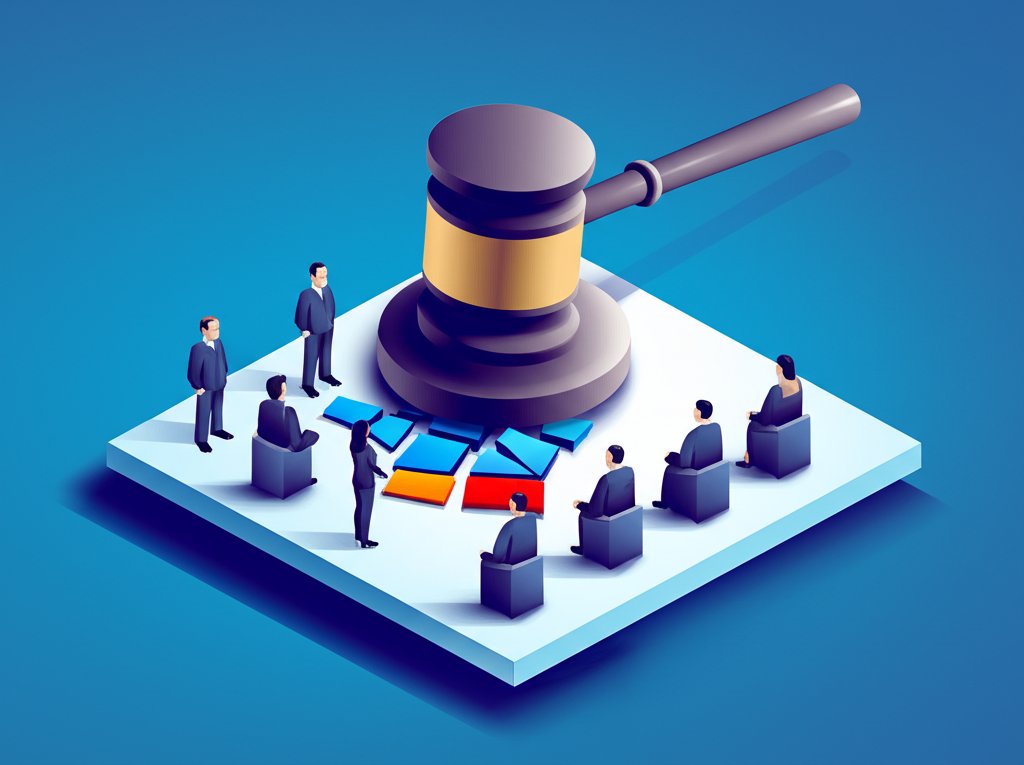Untuk gambaran yang lebih besar dan konteks penuh, pastikan Anda membaca panduan utama kami tentang Bill Gates Biography: New Memoir Reveals Childhood and Tech Beginnings.
markdown
Bill Gates’ success with Microsoft didn’t come without its share of ‘bill gates lawsuits,’ ranging from antitrust allegations to intellectual property disputes. Understanding these legal battles provides context to his journey and the aggressive strategies employed by Microsoft during its rise to dominance.
At a Glance:
- Understand the key antitrust lawsuit against Microsoft and its impact.
- Explore examples of intellectual property and patent litigation involving Microsoft.
- Learn about the long-term consequences of these legal battles on Microsoft’s business practices.
- Identify lessons individuals and businesses can extract from Microsoft’s legal experiences.
- Grasp the role of legal risk management in business strategy.
The Antitrust Showdown: United States vs. Microsoft
Perhaps the most significant of the Bill Gates lawsuits was the antitrust case brought against Microsoft by the United States Department of Justice in the late 1990s. The core allegation? Microsoft was using its dominance in the operating system market (Windows) to stifle competition in other markets, particularly the internet browser market with Internet Explorer.
The Central Issue: Bundling and Monopolization
The government argued that Microsoft illegally tied Internet Explorer to Windows, preventing competing browsers like Netscape Navigator from gaining traction. By making Internet Explorer an integral part of Windows, Microsoft made it difficult for consumers to choose alternative browsers. This was seen as a clear attempt to monopolize the browser market.
Here’s a simplified view of the government’s argument:
- Market Dominance: Microsoft held a near-monopoly in the PC operating system market.
- Leveraging Dominance: Microsoft used its OS dominance to gain an unfair advantage in the browser market.
- Anti-Competitive Practices: Bundling IE with Windows and restrictive agreements with OEMs (Original Equipment Manufacturers) hindered competition.
The Outcome and Its Ramifications
The court initially ruled against Microsoft, ordering the company to be broken up. This drastic remedy was later overturned on appeal. However, the appeals court did find Microsoft guilty of anticompetitive practices. A settlement was eventually reached where Microsoft agreed to certain restrictions on its business practices, primarily related to how it bundled software.
The Long-Term Impact: This lawsuit had a significant impact on Microsoft’s behavior. It led to greater scrutiny of their business practices and arguably paved the way for the rise of alternative technologies and competitors. While the initial breakup was averted, the case significantly altered Microsoft’s corporate culture and approach to innovation. Explore Gates’ early life to understand the context behind Microsoft’s culture and ambition.
Intellectual Property Battles: Protecting (and Challenging) Innovation

Beyond antitrust, Bill Gates lawsuits also encompass various intellectual property disputes. These cases often involved patent infringement claims, copyright issues, and trade secrets.
Patent Infringement: A Common Battlefield
Companies frequently sue each other over patent infringement, and Microsoft is no exception. These cases typically involve allegations that Microsoft’s products or technologies violate the patents of other companies or individuals.
Example: A smaller company might claim that Microsoft’s Windows operating system uses technology covered by their patent without permission.
Copyright Claims: Protecting Software Code
Copyright protects original works of authorship, including software code. Microsoft has both defended its own copyrights and faced accusations of copyright infringement.
Trade Secret Disputes: Safeguarding Confidential Information
Trade secrets are confidential information that gives a business a competitive edge. These can include formulas, practices, designs, or processes. Microsoft has been involved in cases where it was alleged that former employees or competitors misappropriated its trade secrets.
Practical Strategies for Businesses Facing Legal Challenges
The Bill Gates lawsuits offer valuable lessons for businesses of all sizes. How can companies navigate potential legal challenges and minimize their risk?
- Invest in Legal Due Diligence: Before launching a new product or entering a new market, conduct thorough legal due diligence to identify potential risks and compliance requirements. This includes patent searches, trademark reviews, and regulatory assessments.
- Develop a Compliance Program: Implement a comprehensive compliance program that covers antitrust laws, intellectual property protection, data privacy, and other relevant regulations. This program should include training for employees and regular audits to ensure compliance.
- Negotiate Clear Contracts: Ensure that all contracts with suppliers, customers, and partners are clear, comprehensive, and legally sound. Pay particular attention to clauses related to intellectual property rights, liability, and dispute resolution.
- Monitor the Competitive Landscape: Stay informed about the activities of your competitors and any potential legal challenges they may be facing. This can help you anticipate potential risks and proactively address any concerns.
- Seek Legal Counsel: Don’t hesitate to seek legal counsel from experienced attorneys who can provide guidance on complex legal issues and represent your interests in litigation.
The Role of Legal Risk Management in Business Strategy

Integrating legal risk management into overall business strategy is no longer optional; it’s essential for survival and long-term success.
Decision Tree: Navigating Potential Legal Risks
- Identify potential legal risks: What are the specific legal challenges your business might face? (e.g., antitrust, IP infringement, data privacy).
- Assess the likelihood and impact: How likely is each risk to occur, and what would be the potential financial and reputational impact?
- Develop mitigation strategies: What steps can you take to reduce the likelihood of each risk occurring or minimize its impact?
- Implement and monitor: Put your mitigation strategies into action and regularly monitor their effectiveness.
- Review and update: Regularly review and update your risk management plan to reflect changes in the legal landscape and your business operations.
Quick Answers: Frequently Asked Questions
Q: What was the main accusation in the Microsoft antitrust case?
A: The core accusation was that Microsoft illegally tied its Internet Explorer browser to its Windows operating system to stifle competition from Netscape Navigator.
Q: Did Bill Gates personally testify in the antitrust trial?
A: Yes, Bill Gates did testify, but his videotaped deposition was controversial due to his evasive answers and combative demeanor.
Q: How did the antitrust case affect Microsoft’s market position?
A: While Microsoft wasn’t broken up, the case led to increased regulatory scrutiny and forced them to change some of their business practices, ultimately opening the door for more competition.
Q: What’s the biggest takeaway from the Bill Gates lawsuits for new entrepreneurs?
A: Understand the legal landscape, prioritize compliance early on, and seek legal counsel proactively, not reactively. Don’t let ambition overshadow ethical and legal considerations.
Q: Are tech companies more prone to lawsuits than other industries?
A: Yes, due to the rapid pace of innovation, complex intellectual property, and the potential for market dominance, tech companies often face more frequent and complex legal challenges.
Actionable Close
The Bill Gates lawsuits serve as a stark reminder that even the most successful companies are not immune to legal challenges. By understanding the types of legal battles Microsoft faced, and by incorporating proactive risk management and compliance strategies, businesses can significantly reduce their legal exposure and pave the way for sustainable growth. The key is to proactively integrate legal considerations into every aspect of your business strategy, from product development to marketing to partnerships.










